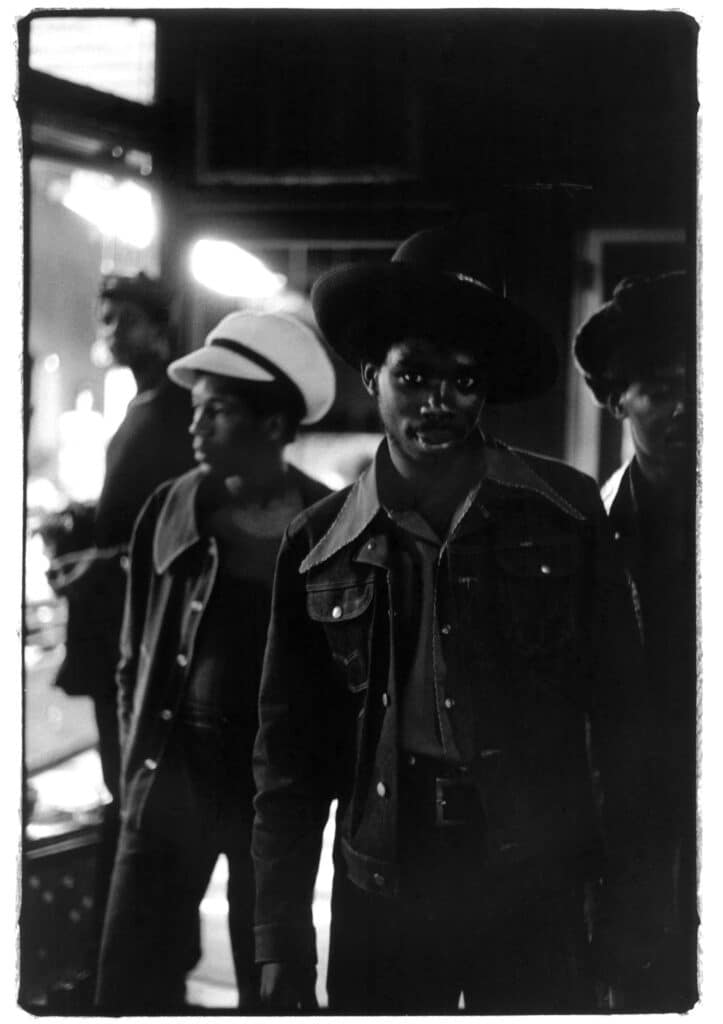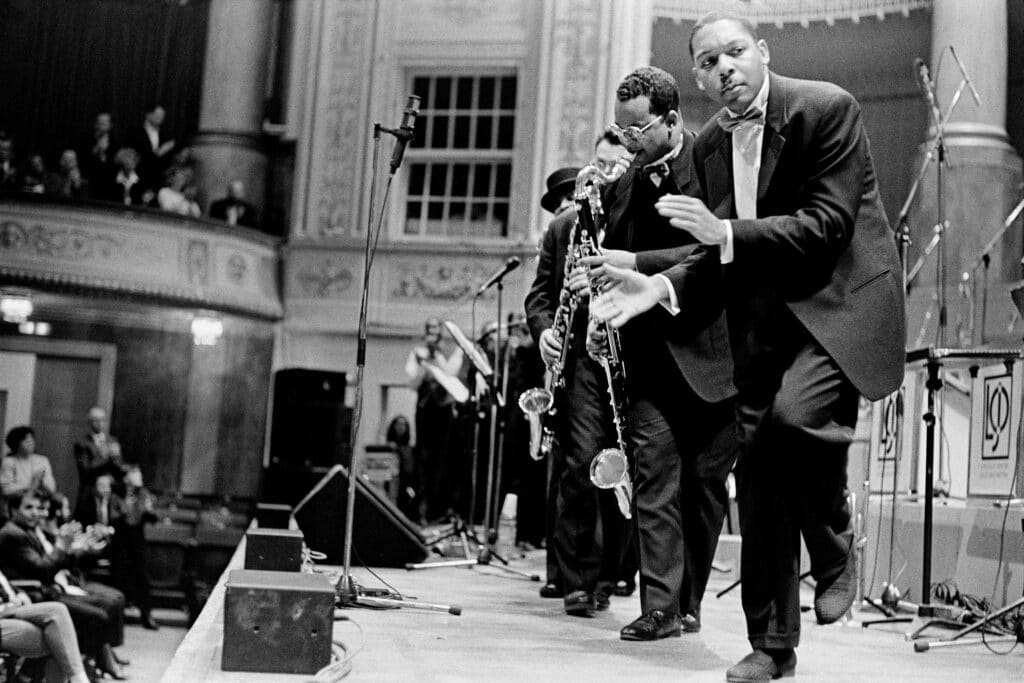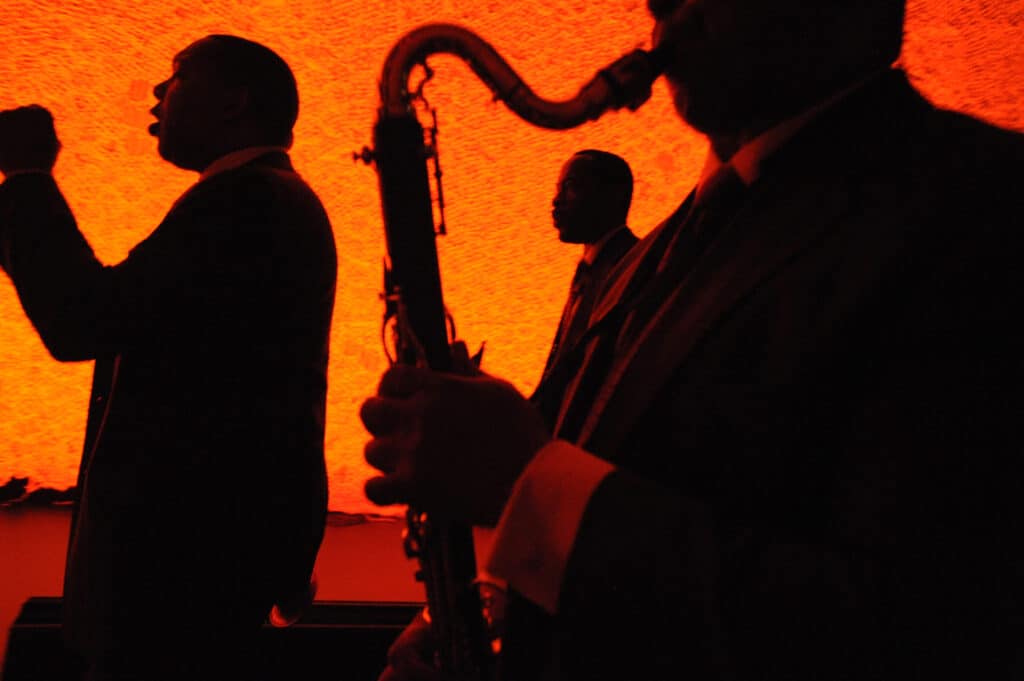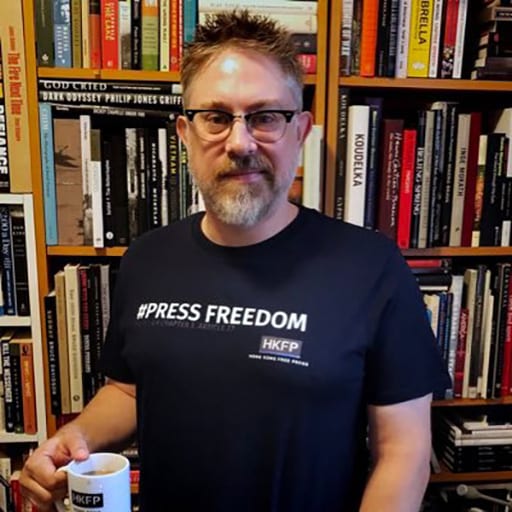Few photographers can say that they were taught by Garry Winogrand, Roy DeCarva, and Joel Meyerowitz. Fewer still can say they also spent time driving around the country with Wynton Marsalis. Add to that photographing the March on Washington for Jobs and Freedom in 1963 as a first experience with a camera. Combine all that with trips to Africa, Cuba, and South America. And then add the title of senior photographer for Jazz at Lincoln Center to the mix. And with all that, and much more, you have the life and work of photographer Frank Stewart.
“Stewart creates a sense of intimacy and familiarity, a feeling of ‘I know these people. I have been there. They resemble my family‘”
Mary Schmidt Campbell
As Mary Schmidt Campbell, the President Emerita of Spelman College, writes in her introduction to Nexus, “To look at a photograph by Frank Stewart is to look at an image that feels familiar. Like his teacher and mentor Roy DeCarava, Stewart creates a sense of intimacy and familiarity, a feeling of ‘I know these people. I have been there. They resemble my family.’ No matter what subject matter Stewart is capturing, whether it is the itinerant life of the Jazz at Lincoln Center musicians, a family reunion, or the grief amid the losses of Katrina, Stewart beckons the viewer to join him in getting to know the place and people who inhabit his photographs.”
Since the 1960’s, Stewart has captured spontaneous and sensitive photographs of African American culture in all its forms, from art, to food, to dance, to music – and especially jazz. But he did not stop there. He has also travelled through Africa, the Caribbean, Europe, and Asia capturing Black life, culture, and rituals, on the world stage.
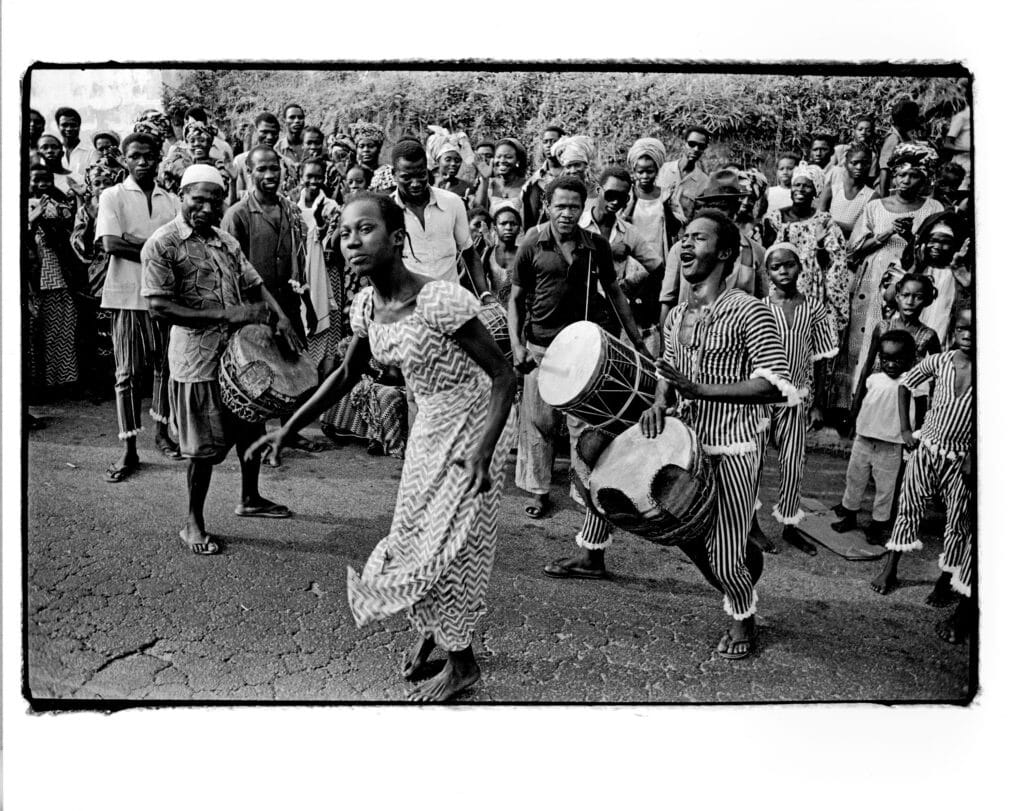
Travelling photographer
Stewart has always been comfortable living on the road, and traveling, the experience of which has also had an influence on his photography. By the time he was in high school, he had lived in multiple cities, with different family members and friends. Stewart recounts the experience in an interview with Ruth Fine, the former curator of special projects at the National Gallery of Art.
“All I needed was a bed and something to eat. The whole thing was to get me to a point where I could be on my own. The reason I’m comfortable on the road now is because of that peripatetic childhood. Both my mother and father had multiple partners and were shifting their lives all the time. As a result, my life got shifted, not with them but apart from them, from foster homes to different family members to friends and strangers. Once I was out of school, I got a job on the road with Ahmad Jamal, which was just a further exploration of different cities. It took me out to the West Coast and points in between.”
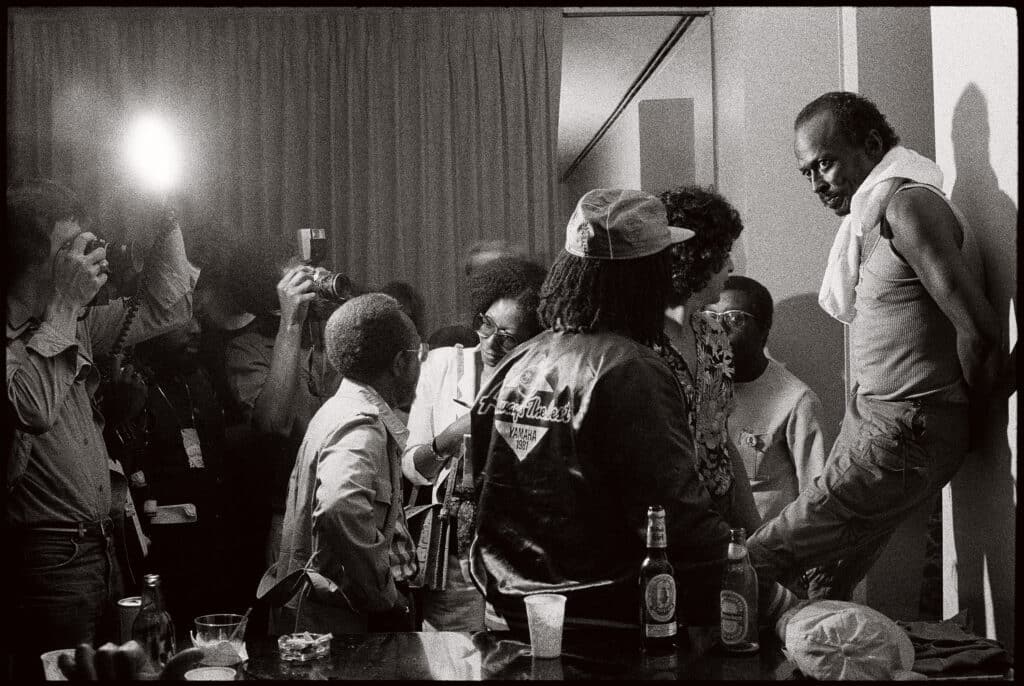
Stewart was born in Nashville, Tennessee in 1949. His parents, Dorothy “Dotty” Jean Lewis Stewart and Frank Lehman Stewart Sr., had met in college. But the marriage came apart when Stewart was about a year old, and while he and his mother stayed in Nashville, his father moved away.
When Dotty moved to New York City to pursue a career as a model and dancer, Stewart moved to Memphis to live with his grandmother and great-grandmother. But after 3rd grade, Stewart moved to New York City, and to Harlem specifically, to live with his mother and his new stepfather Phineas Newborn, Jr., a jazz pianist. Newborn would take Stewart to many of the jazz clubs in the city while he was working, like Birdland, the Five Spot and the Village Vanguard where he would meet many jazz legends, like Count Basie, Miles Davis, and Roy Haynes.
When the relationship between his mother and Newborn ended, Stewart moved to Chicago to live with his father. And it is in Chicago where he if first introduced to photography and photojournalism, though the contacts he made would become more important later.
The first reports
In Chicago, Stewart became friendly with Lewis Sengstacke, the youngest brother of photojournalist Robert Sengstacke. The Sengstacke family also owned a series of important African American newspapers, including the Chicago Defender and the Tri-State Defender, which covered Arkansas, Mississippi, and Tennessee. Lewis also introduces Stewart to budding photojournalist John Simmons, who become a lifelong friend.
“Back in 1963, before the march, there was no way that you could imagine there’d be no segregation in America.”
But it was the March on Washington for Jobs and Freedom where he makes his first photographs. Stewart had borrowed his mother’s Kodak Brownie camera, and had the photographs developed and printed at a local drug store.
“Even then, I thought that was a heavy, important moment that should be documented. That I should document it. I wasn’t near the stage, but off to the left, and the crowd was euphoric. The atmosphere was filled with possibility, and that became interesting to me. So, I started photographing what was going on, the crowd of euphoric people, the good feeling in the humanity that was around me: people carrying signs, a lot of singing. It was the first time I had seen that big of an interracial crowd—White and Black people together—and I thought that was interesting. The euphoria was like when Barack Obama became president, you thought everything was going to change. Back in 1963, before the march, there was no way that you could imagine there’d be no segregation in America.”
So, Stewart’s journey as a photographer began. It continued when he was in college at Middle Tennessee State University. While Stewart did not like the school that much, his good friend John Simmons was studying at Fisk University, about 25 miles away in Nashville. Simmons was also an assistant for Bobby Sengstacke, who was the photography teacher at Fisk, and who let Stewart audit his photography classes.
And Stewart’s education in photography expanded from there. He met Roy DeCarva in New York and studied with him at the Cooper Union. There he also studies with Jay Maisel and Joel Meyerowitz, and the rest of the impressive faculty. He also studied with Garry Winograd during a summer course at the Art Institute of Chicago in 1972. Taken together, these experiences gave Stewart a very wide and deep education.
As he says in the book about his experience with Winogrand, ” Winogrand showed us that there is no way a photograph has to look, and that anything can be photographed. He had done a shot of a boy who had just caught a fish, and the fishing line he’d used was on the ground. The subject of the photograph was as much the line on the ground as the fish, or the boy who caught it. After that summer he started teaching at Cooper Union, and I got to know him better there. His work opened up a whole new world of prospects to me—the way he told stories; how he shot with a wide-angle lens; the way he broke up space.”
Around the world
And he has never stopped moving. In 1974, he took his first trip to Africa as part of the Cooper Union Independent Study Program. Later in the 70’s he also started to travel with jazz musicians around the United States, photographing as he goes, and takes his first of many trips to New Orleans. He photographed the Democratic conventions in 1976 and 1980. In 1977 he went to Cuba for the first time, having been invited by the Cuban government to travel throughout the country for a month.
He worked as a photographer for the United Negro College Fund for two years in the late 70’s. In 1984 he photographed the Summer Olympics in Los Angeles. In the late 1980’s and early 90’s he traveled with Wynton Marsalis photographing him on the road. While from 1993 through 2019 he worked as the road manager and senior staff photographer for Jazz at Lincoln Center, traveling far and wide with the musicians. In 2006 he was again in New Orleans to photograph the long-term impacts of Hurricane Katrina. And in 2020 he traveled through Washington, Oregon, and California to photograph the aftermath of wildfires. He has also taught over the years as well. And that is not everything he has done and seen over his career.
The book follows Stewart’s career in how it is broken up into chapters, each one exploring one aspect of his work. And like the jazz that Stewart has been documenting and exploring though out his life, each chapter builds on the others. But at the same time, each is also essential to the whole. It is the ability to see all the parts, and the relationships between them, that really puts Stewart’s work in context.
It’s in the play between three musicians walking through a cemetery in St. Louis opposite a 3 Klansmen at a rally in Jackson, Mississippi. It’s in the photographs of a Second-Line opposite a man shouting on Canal Street in New York City. It’s the portraits of artists and musicians in their studios, and those of daily life in Ghana or Cuba.
The intimate and subtle relations between and among people are always at the heart of Stewart’s art, just like those same sorts of connections are what led Stewart down the path that he took to becoming a photographer. Even when there are no people in the photographs, they remain the subjects. Like the photographs of flooded houses in the wake of Hurricane Katrina and those of burned buildings and landscapes in the California Fires Series. The relationship between the subject and the people who once called the spaces home, or spent time there, is palpable.
In another section of the interview in the book, Stewart lays out what he tells his students about photography and art, and what he has gleaned over his long career. It works to inforce his thoughts on how he relates to those who see his photographs, who he is really making his work for, and how life experience can change how it is all viewed.
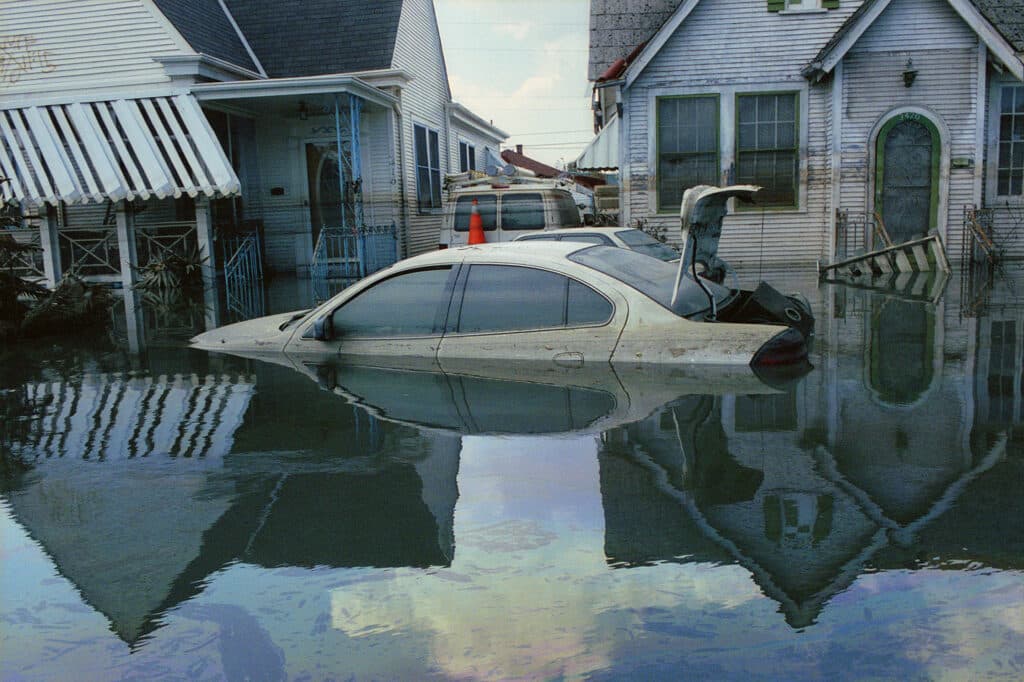
“The thing is, and this is what I tell all my students, you’re not making art for people who don’t like it. You are making art for yourself, and strangers that like it, whatever time or place they are living in—now, and somebody fifty years from now, in China or Russia, as well as New York or Savannah. Art is a universal language. It’s like math—two plus two is four at the beginning of the century; it’s four at the end of the century. Great art is going to be great art, whenever it’s made, by whomever it’s made. To think about it any other way is insulting to the art. People come to art from the sum of their own experience. You come to it with the sum of your experience by making it; the people who look at it come to it with the sum of their experience, to appreciate it—or not. The richer the experience that is brought, the richer the experience that is taken away. Not only experience in art; it can be experience in living, and that’s what you do. You come to the art with the sum total of all of your experience”
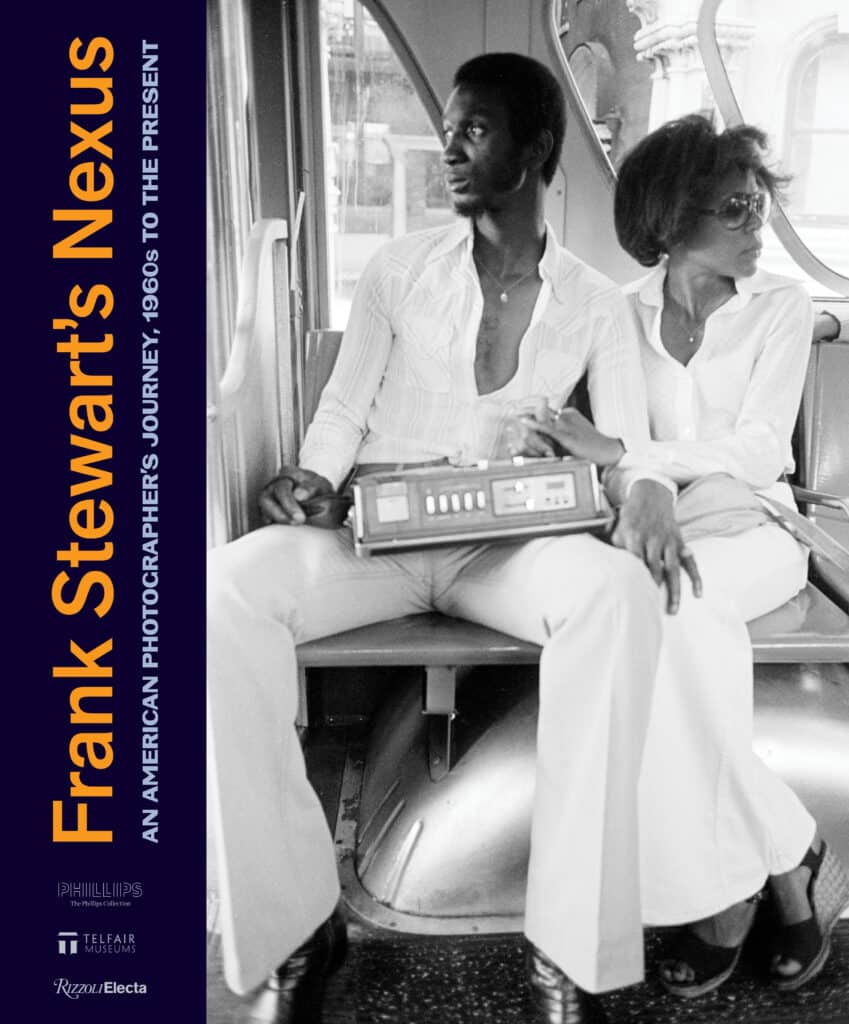
Frank Stewart’s Nexus: An American Photographer’s Journey, 1960’s to the Present, is published by Rizzoli, and can be purchased from their website here. The exhibition of the work will be at Artis–Naples, at The Baker Museum in Naples, Florida from October 14, 2023–January 7, 2024. It will then be at the Telfair Museums in Savannah, Georgia from February 9th to May 12th, 2024.

